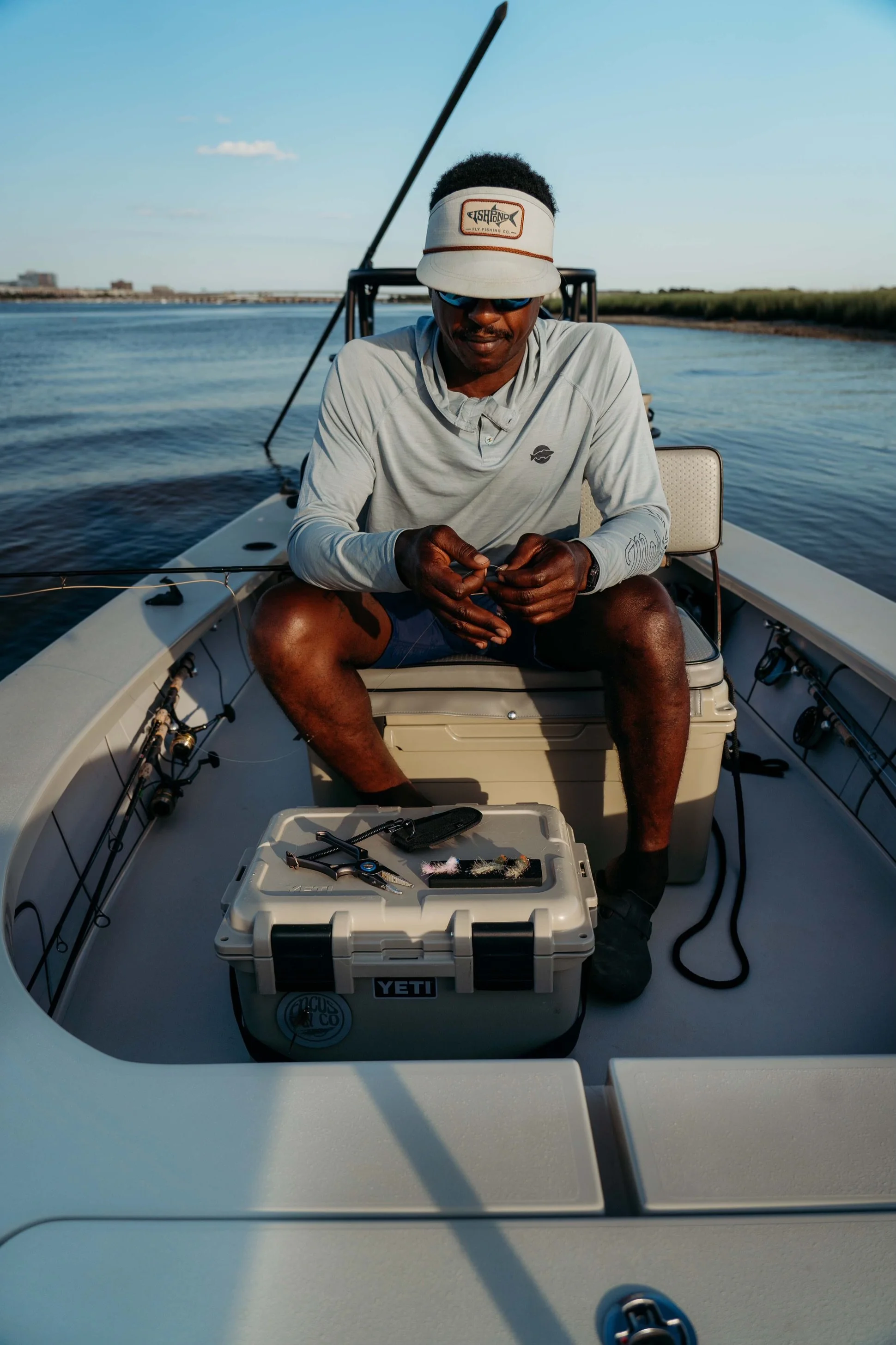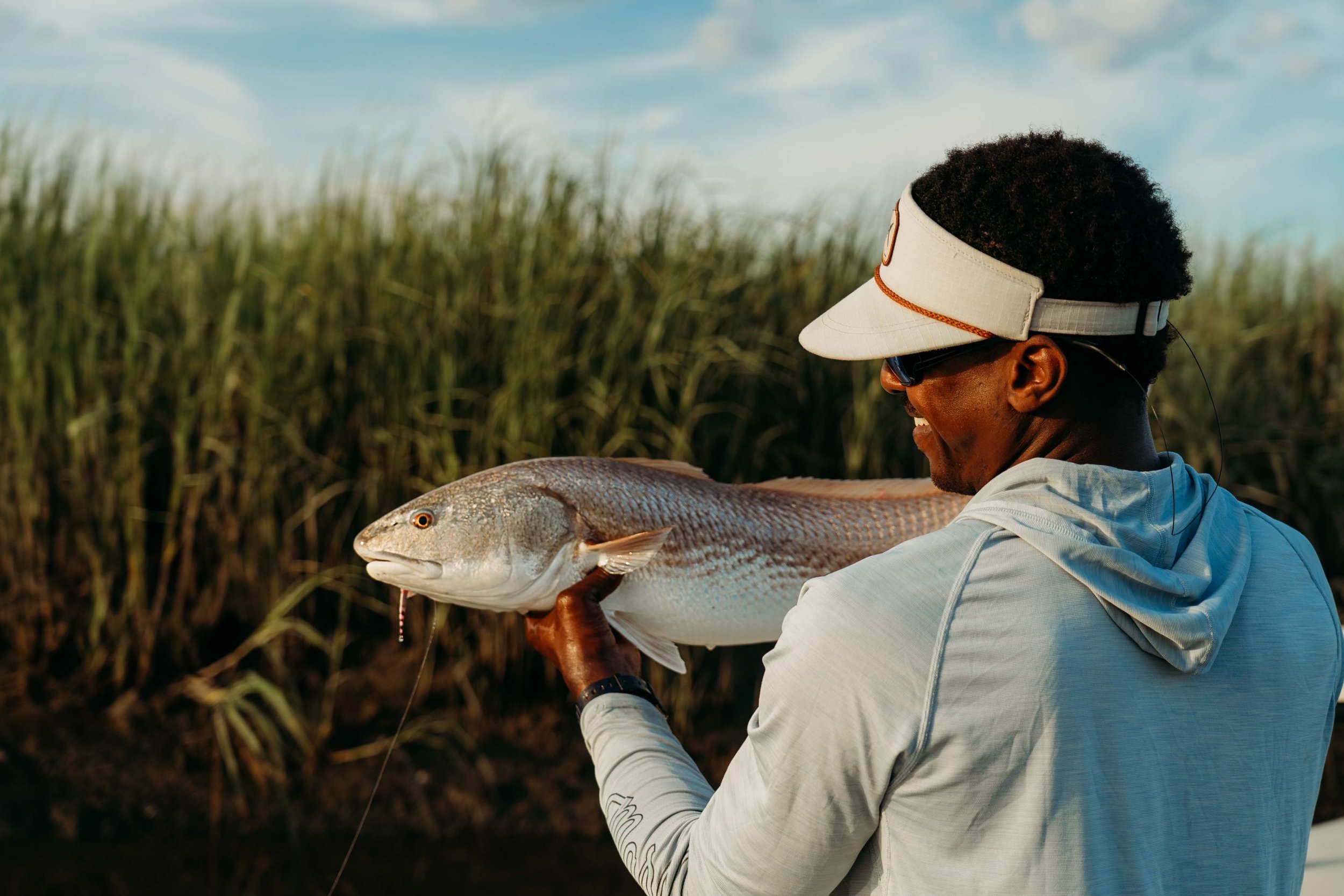Feathers and Fins: Tying Redfish Flies from Marsh Hen Plumage
Marsh hen hunting, also known as clapper rail hunting, is one of the Lowcountry’s most unique and overlooked traditions. Taking place during the fall’s high flood tides, when the water in the spartina grass is chest-high and the tides push these elusive birds out of cover, it’s a pursuit that combines patience, knowledge of the tides, and a deep appreciation for the marsh. Boats ease through narrow creeks while hunters scan the tops of the grass for the flutter of wings. When a bird flushes, it’s fast and close. Reminding me of quail hunting on water.
On a recent hunt, after a few birds were cleaned back at a marsh island, a flash of inspiration struck. One of the marsh hens had a patch of soft, olive-barred flank feathers too perfect to ignore. The idea was simple, but soulful. I wanted my buddy Devin to tie a fly using that feather and see if it could tempt a redfish.
Devin ties some of the best flies in the Lowcountry and keeps my box stocked. The result was a naturally colored shrimp pattern tied with the marsh hen’s feather as the body and shell. It looked like it belonged in the pluff mud. Muted, mottled, alive. A few days later, on a low tide, my buddy Ahmon tied it on and swung it in front of a pushing wake. One cast, one strip, and the tail lit up. The redfish crushed it in a foot of water.
There’s something poetic about the cycle. Harvesting from the marsh, creating with your hands, and giving it back in the form of fly and fish. It’s a story only the Lowcountry could tell, where the line between hunter, angler, and conservationist often blurs, and the marsh always gives back more than it takes.
Written by: Austin Young
Photos: Austin Young
Flies by: Devin (find him on IG)
https://www.instagram.com/hoodratstreamerswmf?igsh=eDdxZ3FhMWRjOTR4






